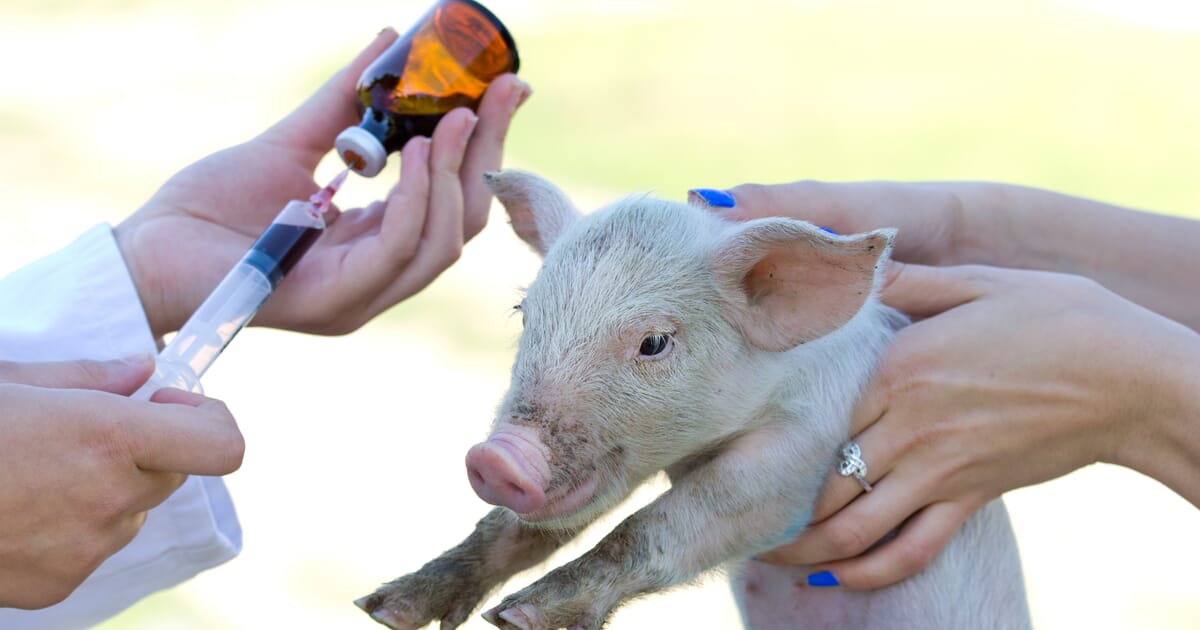An ounce of prevention is worth a pound of cure, and that’s especially true when it comes to livestock. New developments in precision livestock farming (PLF) can make preventative care of livestock more feasible and automated.
PLF is a tool that continuously and automatically monitors animals in real time. It alerts the farmer to a specific animal that needs their attention. This allows for immediate, active management on the spot.
With PLF, farmers don’t have to wait until the end of the fattening period or even the end of the day to spot problems. They can take care of them as soon as they arise.
While PLF has been around since 1991, new developments in the three technologies mentioned above will allow for more broad market adoption and use on livestock farmers.
How PLF technology works
Dr. Daniel Berckmans, Professor at KU Leuven, Belgium, and the University of Tennessee, presented several specific examples of how PLF technology works on the farm.
Generally, there are three ways to monitor animals through PLF:
- Images
- Sensors
- Sound
When it comes to imaging, Berckmans gave weight monitoring as an example use case. By comparing weight to feed supply, producers can optimize their feeding strategy. This reduces the need to hand weigh each individual pig, providing an estimate that is enough to make informed decisions.
Additionally, advanced sensors can monitor physiological variables like heart rate to calculate the energy used by the animal in real time. In the future, Berckmans posits, the technology will develop to create sensors that can measure hormone concentration within animals.
With pigs, for example, a negative stressor correlates to an increase in noradrenaline in negative correlation with the blood hormone. This would allow for earlier detection of distressed animals.
However, the most successful of the three PLF techniques is sound. In most cases, respiratory diseases in pigs can be detected by sound analysis in real time. PLF tools can analyze the various sounds (coughs, sneezes, etc.) to identify sick pigs.
Because this is done in real time, the tool can give an alert to the farmer or vet. For the farmer, they can receive a real-time update showing where the sick animal is, and the potential impact it can have on the building and pen where it’s being held. For vets, they can see which areas of the county have sick animals.
Challenges with PLF Implementation
While PLF technology provides lots of opportunity for farmers & animal caretakers, there are still challenges. Many of these stem from scalability challenges, as well as the affordability of the individual pieces of equipment that are required.
Imaging, for example, can present challenges in a harsh production environment (which is what most farms are) due to variations. Light conditions, flies, dust, gases & more can present challenges to the algorithms.
For one European farm, Berckmans joked that they built not an animal monitor, but a fly detector.
Another challenge with imaging is the number of cameras needed. One camera can effectively monitor roughly 48 pigs. And on top of the cameras themselves, the housing units are also expensive.
Microphones tend to do much better than imaging. One microphone can monitor 200 fattening pigs or 120,000 X in the industrial incubator to detect internal beeping at several stages of embryo development. Because of this, sound monitoring is already in much wider application than the other two methods.
Sensors have a unique advantage in that they allow for individual monitoring, and directly monitor physiological responses. After all, that’s the real objective of PLF. In the short-term, Berckmans anticipates that this method will be used for high-value animals, but will later trickle down into the broader market.
The Road to Broad Market Adoption of PLF
Right now, sound technology is the only available PLF technology that has been implemented in the market. However, according to Berckmans, “the fully automated, continuous, and real-time monitoring of livestock will come.”
PLF is not intended, nor is it anticipated to replace farmers’ need for expert opinions or other stakeholders. It’s a tool that allows everyone to do their jobs more efficiently and effectively.
Broad market adoption of PLF techniques require collaboration among the industry, researchers, farmers, and other stakeholders. Veterinarians specifically will play a crucial role in interpreting the data provided by this technology.
The result: a new world of real-time monitoring and management, as well as a more efficient process control. This, in turn, can lead to a much more sustainable livestock sector.



